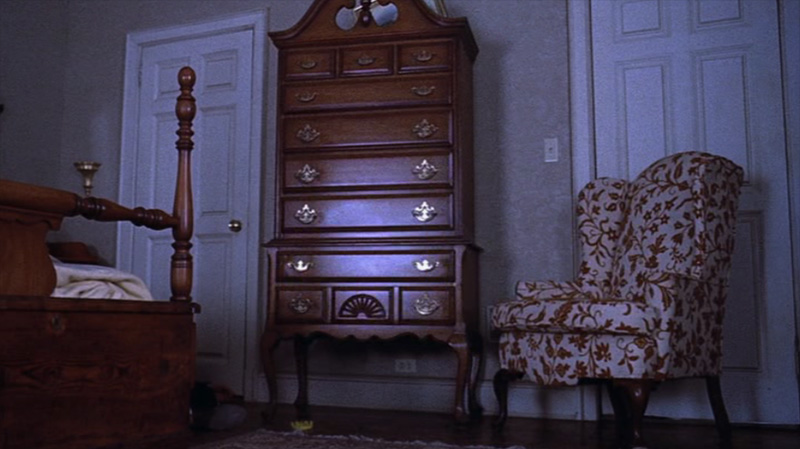I'm in the mood to create another movie dedication thread and I just changed my avatar/profile theme to The Exorcist, so...............

The Article That Inspired William Peter Blatty for The Exorcist


The Article That Inspired William Peter Blatty for The Exorcist
William Blatty: In 1949, while a junior at Georgetown University in Washington, D.C., I read in the August 20 edition of the Washington Post the following account:
In what is perhaps one of the most remarkable experiences of its kind in recent religious history, a 14-year-old Mount Rainier boy has been freed by a Catholic priest of possession by the devil, it was reported yesterday. Only after 20 to 30 performances of the ancient ritual of exorcism, here and in St. Louis, was the devil finally cast out of the boy, it was said.
In all except the last of these, the boy broke into a violent tantrum of screaming, cursing and voicing of Latin phrases, a language he had never studied, whenever the priest reached those climactic points of the 27 page ritual in which he commanded the demon to depart from the boy. In complete devotion to his task the priest stayed with the boy over a period of two months, during which he witnessed such manifestations as the bed in which the boy was sleeping suddenly moving across the room.
A Washington Protestant minister has previously reported personally witnessing similar manifestations, including one in which the pallet on which the sleeping boy lay slid slowly across the floor until the boy’s head bumped against a bed, awakening him. In another instance reported by the Protestant minister, a heavy armchair in which the boy was sitting, with his knees drawn under his chin, tilted slowly to one side and fell over, throwing the boy on the floor.
The final rite of exorcism in which the devil was cast from the boy took place in May, it was reported, and since then he had had no manifestations. The ritual of exorcism in its present form goes back 1500 years and from there to Jesus Christ. But before it was undertaken, all medical and psychiatric means of curing the boy, in whose presence such manifestations as fruit jumping up from the refrigerator top in his home and hurling itself against the wall also were reported, were exhausted.
The boy was taken to Georgetown University Hospital here, where his affliction was exhaustively studied, and to St. Louis University. Both are Jesuit institutions. Finally both Catholic hospitals reported they were unable to cure the boy through natural means. Only then was a supernatural cure sought. The ritual was undertaken by a Jesuit in his 50’s. The details of the exorcism of the boy were described to The Washington Post by a priest here (not the exorcist). The ritual began in St. Louis, continued here and finally ended in St. Louis.
For two months the Jesuit stayed with the boy, accompanying him back and forth on the train, sleeping in the same house and sometimes in the same room with him. He witnessed many of the same manifestations reported by the Protestant minister this month to a closed meeting of the Society of Parapsychology laboratory at Duke University, who came here to study the case, was quoted as saying it was “the most impressive” poltergeist (noisy ghost) phenomenon that had come to his attention in his years of celebrated investigation in the field.
Even through the ritual of exorcism the boy was by no means cured readily. The ritual itself takes about three quarters of an hour to perform. During it, the boy would break into the fury of profanity and screaming and the astounding Latin phrases. But finally, at the last performance of the ritual, the boy was quiet. And since then, it was said, all manifestations of the affliction, such as the strange moving of the bed across the room, and another in which the boy’s family said a picture had suddenly jutted out from the wall in his presence, have ceased.
It was early this year that members of the boy’s family went to their minister and reported strange goings on in their Mount Rainier house since January 18. The minister visited the boy’s home and witnessed some of the manifestations. But though they seemed to the naked eye unexplainable, such as the scratchings from the area of the wall in the boy’s presence, there was always the suggestion, he said, that in some way the noises may have been made by the boy himself.
Retaining his skepticism in the matter, the minister then had the boy stay a night, February 17, in his own home. It was there, before his own eyes, he said, that the two manifestations that he felt were beyond all natural explanation took place. In one of these the boy’s pallet moved across the floor while his hands were outside the cover and his body rigid. In the other the heavy chair, with the boy immobile in it, tilted and fell over to the floor before the minister’s amazed eyes, he said.
The minister tried to overturn the chair while sitting in it himself and was unable to do so. The case involved such reactions as neighbors of the boy’s family sprinkling holy water around the family’s house. Some of the Mount Rainier neighbors’ skepticism was startlingly resolved, it was reported, when they first laughed it off, invited the boy and his mother to spend a night in their own “unhaunted” homes, only to have some of the manifestations, such as the violent, apparently involuntary shakings of the boy’s bed, happen before their eyes.

__________________
SciFiMovieZone.com
SciFiMovieZone.com





